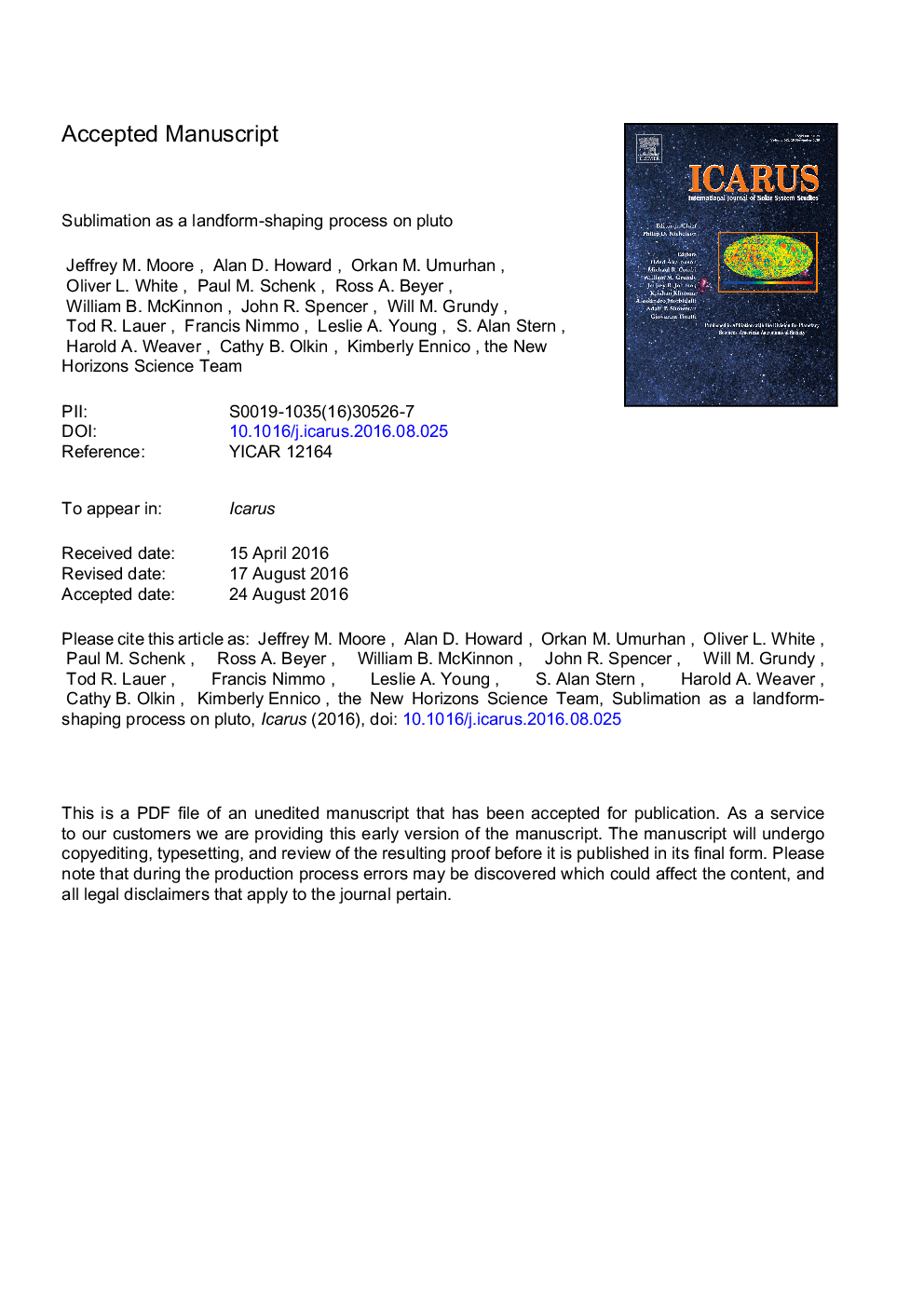| Article ID | Journal | Published Year | Pages | File Type |
|---|---|---|---|---|
| 5487374 | Icarus | 2017 | 55 Pages |
Abstract
Fields of pits, both large and small, in Tombaugh Regio (Sputnik Planitia, and the Pitted Uplands to the east), and along the scarp of Piri Rupes, are examples of landscapes on Pluto where we conclude that sublimation drives their formation and evolution. Our heuristic modeling closely mimics the form, spacing, and arrangement of a variety of Tombaugh Regio's pits. Pluto's sublimation modified landforms appear to require a significant role for (diffusive) mass wasting as suggested by our modeling. In our models, the temporal evolution of pitted surfaces is such that initially lots of time passes with little happening, then eventually, very rapid development of relief and rapid sublimation. Small pits on Sputnik Planitia are consistent with their formation in N2-dominated materials. As N2-ice readily flows, some other ``stiffer'' volatile ice may play a role in supporting the relief of sublimation degraded landforms that exhibit several hundred meters of relief. A strong candidate is CH4, which is spectroscopically observed to be associated with these features, but the current state of rheological knowledge for CH4 ice at Pluto conditions is insufficient for a firm assessment.
Related Topics
Physical Sciences and Engineering
Earth and Planetary Sciences
Space and Planetary Science
Authors
Jeffrey M. Moore, Alan D. Howard, Orkan M. Umurhan, Oliver L. White, Paul M. Schenk, Ross A. Beyer, William B. McKinnon, John R. Spencer, Will M. Grundy, Tod R. Lauer, Francis Nimmo, Leslie A. Young, S. Alan Stern, Harold A. Weaver, Cathy B. Olkin,
